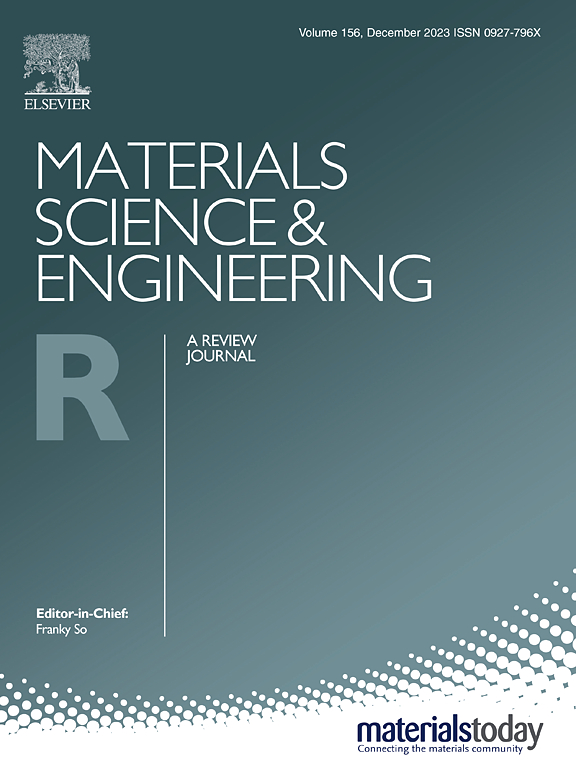Hydrogenated metal oxide semiconductors for photoelectrochemical water splitting: Recent advances and future prospects
IF 31.6
1区 材料科学
Q1 MATERIALS SCIENCE, MULTIDISCIPLINARY
引用次数: 0
Abstract
Hydrogenated metal oxide semiconductors (HMOS) are witnessed tunable and superior structural, electrical, optical and catalytic properties, have emerged as a novel class of semiconductors in various applications, especially as photoanodes in photoelectrochemical (PEC) water splitting technology towards sustainable green hydrogen production, effectively overcoming the constraints associated with traditional metal oxides semiconductors which suffer limited visible light absorption and elevated electron-hole recombination rates. Herein, we offer a comprehensive overview of recent advances in fabrication, compositions and understanding of HMOS nanomaterials, as well as its crucial function in improving PEC activity, focusing on the potential hydrogenation techniques for practical applications and further surface and interface engineering strategies to boost PEC properties. We showcase a theoretical framework for understanding hydrogenation mechanisms and the impact on PEC activity. We also emphasize combining advanced and in-situ characterization techniques with theoretical simulations to unravel the mechanisms underlying the enhanced PEC activity to establish the structure-property-function relationships from both macroscopic and microscopic perspectives. Finally, we discuss the remaining challenges in HMOS design and provide a perspective on further research directions of HMOS nanomaterials for PEC water splitting that realize PEC technology to contribute to produce green hydrogen efficiently.
用于光电化学水分解的氢化金属氧化物半导体:最新进展及未来展望
氢化金属氧化物半导体(HMOS)具有可调谐和优越的结构、电学、光学和催化性能,已成为一类新型半导体,在各种应用中,特别是在光电化学(PEC)水分解技术中作为可持续绿色制氢的光阳极。有效地克服了传统金属氧化物半导体可见光吸收受限和电子空穴复合率升高的限制。在此,我们全面概述了HMOS纳米材料的制造,组成和理解的最新进展,以及它在提高PEC活性方面的关键功能,重点关注实际应用的潜在加氢技术以及进一步提高PEC性能的表面和界面工程策略。我们展示了一个理论框架来理解氢化机制和对PEC活性的影响。我们还强调将先进的原位表征技术与理论模拟相结合,揭示PEC活性增强的机制,从宏观和微观角度建立结构-性能-功能关系。最后,我们讨论了HMOS设计中存在的挑战,并展望了HMOS纳米材料用于PEC水裂解的进一步研究方向,实现PEC技术为高效生产绿色氢做出贡献。
本文章由计算机程序翻译,如有差异,请以英文原文为准。
求助全文
约1分钟内获得全文
求助全文
来源期刊

Materials Science and Engineering: R: Reports
工程技术-材料科学:综合
CiteScore
60.50
自引率
0.30%
发文量
19
审稿时长
34 days
期刊介绍:
Materials Science & Engineering R: Reports is a journal that covers a wide range of topics in the field of materials science and engineering. It publishes both experimental and theoretical research papers, providing background information and critical assessments on various topics. The journal aims to publish high-quality and novel research papers and reviews.
The subject areas covered by the journal include Materials Science (General), Electronic Materials, Optical Materials, and Magnetic Materials. In addition to regular issues, the journal also publishes special issues on key themes in the field of materials science, including Energy Materials, Materials for Health, Materials Discovery, Innovation for High Value Manufacturing, and Sustainable Materials development.
 求助内容:
求助内容: 应助结果提醒方式:
应助结果提醒方式:


